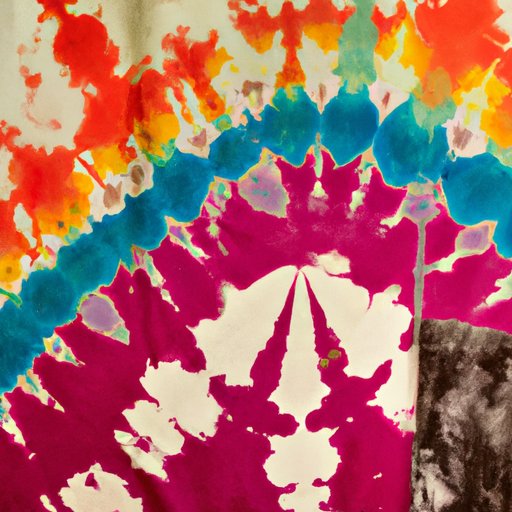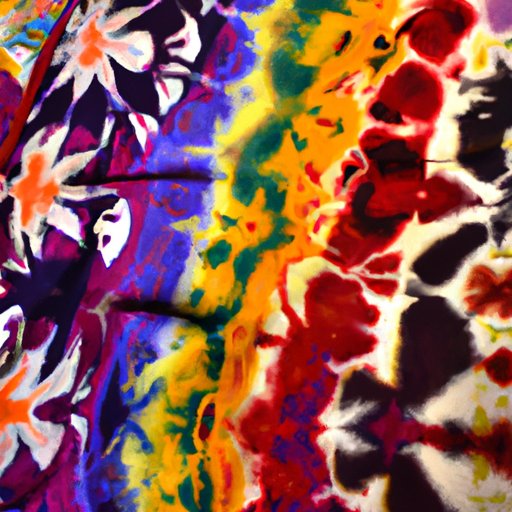Introduction
Tie dye is one of the most recognizable prints in the world. It’s often associated with the 1960s counterculture movement, but the truth is that it’s been around for much longer than that. In this article, we’ll explore the history of tie dye fashion and how it’s become an iconic part of the fashion scene today.

A Historical Look at the Popularity of Tie Dye Fashion
Tie dye has its roots in ancient India, where it was used to decorate fabrics for ceremonial occasions. The traditional Japanese Shibori technique also uses the same principle of tying and dyeing fabric to create unique patterns. However, tie dye as we know it today didn’t become popular until the mid-20th century.
The first adopters of tie dye fashion were hippies in the United States during the 1960s. They embraced the bright colors and bold patterns as a symbol of peace and love. As the decade progressed, tie dye became associated with music festivals, rock concerts, and the psychedelic movement.
By the 1970s, tie dye had become mainstream, appearing on shirts, dresses, and even swimsuits. But as the decade ended, interest in the trend began to wane. While tie dye still existed in some circles, it wasn’t until the 1990s that it experienced a resurgence in popularity.
Exploring the Revival of Tie Dye in Modern Culture
Today, tie dye is more popular than ever. Its vibrant colors and eye-catching designs have made it a staple of contemporary streetwear. It’s been featured in collections from major brands like Supreme and Nike, and high-end designers like Gucci and Balenciaga have included tie dye pieces in their runway shows.
Tie dye has also become a popular choice for DIY projects. Many people are getting creative and using the technique to customize everything from t-shirts to shoes. This has helped to further popularize the trend and make it accessible to a wider audience.

How Tie Dye Became an Iconic Part of the 1960s Counterculture Movement
Tie dye played an important role in the 1960s counterculture movement. The bright colors and bold patterns of tie dye clothing helped Hippies to stand out and express their individuality. It was also seen as a symbol of rebellion against the establishment.
Many iconic images from the 1960s feature tie dye, such as Jimi Hendrix’s shirt at Woodstock or Janis Joplin’s dress at Monterey Pop Festival. These images helped to cement tie dye’s place in pop culture, and it remains an iconic part of the fashion scene today.
Conclusion
Tie dye has been a part of fashion for centuries, but it’s only recently that it has seen a resurgence in popularity. From its origins in ancient India to its iconic role in the 1960s counterculture movement, tie dye has become an undeniable part of the fashion scene. Today, tie dye is everywhere, from streetwear to high-end fashion, and it’s likely to remain a staple for years to come.
(Note: Is this article not meeting your expectations? Do you have knowledge or insights to share? Unlock new opportunities and expand your reach by joining our authors team. Click Registration to join us and share your expertise with our readers.)
